Do you think that your mattress is getting old?
Perhaps you’re looking for a new mattress for your bed?
We know that this task can be pretty daunting, so we are here to help.
One important thing to consider before deciding on what type of mattress to acquire, is how durable it is.
Afterall, we all hate purchasing something for hundreds or even thousands of dollars, which would be the case with a mattress, just to have it last for just a few years.
For this post we researched almost hundred mattress manufacturers to gather information about the durability of the different mattress types.
So, which are the most and least durable mattress types available? We found the most durable mattress types to be memory foam, latex and waterbeds. When taken good care of, these mattresses can last for as long as 10-20 years. The least durable mattress types came out to be pillow top, air and gel mattresses, which seems to last between 5-8 years on average.
Read on to learn more about the different mattress types and how long they are expected to last. At the end of this post you’ll also learn what the signs of an old mattress is and how to make a mattress last longer.
Let’s get to it.
The Least to Most Durable Mattress Types Listed Out
| Mattress Type | Average Lifespan |
| Pillow top mattresses | 5-7 years |
| Air mattresses | 2-8 years |
| Gel mattresses | 5-8 years |
| Innerspring mattresses | 7-10 years |
| Hybrid mattresses | 8-10 years |
| Poly foam mattresses | 8-10 years |
| Memory foam mattresses | 10-15 years |
| Latex mattresses | 15-18 years |
| Water beds | 17-20 years |
Read on to learn more about these different mattress types and how long they are expected to last on average. The list goes from least to most durable according to our research.
Pillow Top Mattresses
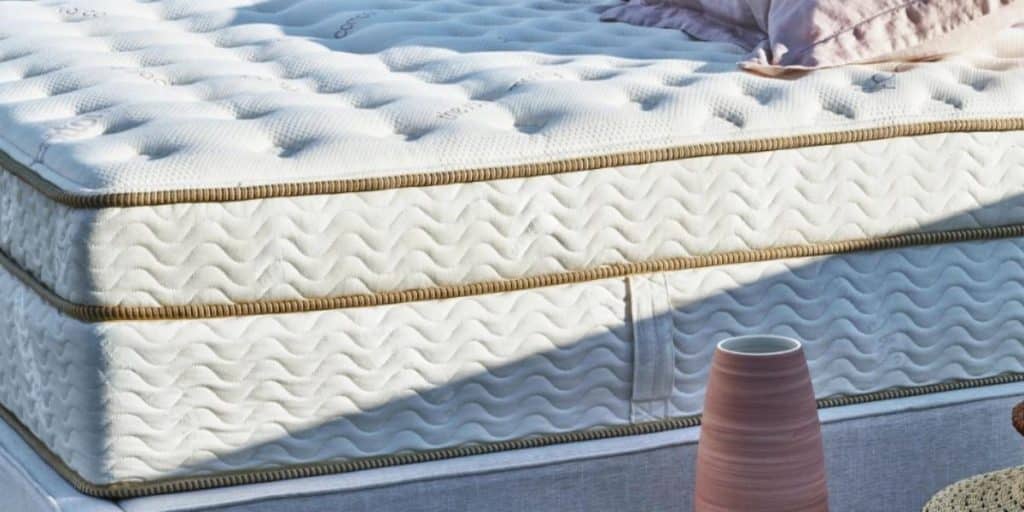
Average lifespan: 5-7 years
Similar to the ‘Euro-top’ mattresses, this mattress type features a several-inch-thick layer of padding.
When combined with an innerspring, the pillow top mattress provides enough comfort due to the amount of cushioning available.
You will enjoy benefits ranging from cooling to bounce, durability, and additional comfort depending on the type of material you choose for your pillow top. Cotton, memory foam, foam, fiber film, latex, and wool are some available top materials.
Pillow top mattresses are by far the most expensive type of mattress on the market. However, they are cost-effective since they provide the benefits of all mattresses and have cooling capabilities, provide firmness, and are washable.
However, a big drawback of the pillow top mattress is the shorter lifespan compared to other mattresses. In our research we found that it will last between 5-7 years on average.
The reason for the shorter life expectancy of this type of mattress is that the top padding material wears out much faster than the base itself, which means that it loses its fluffiness after a few years.
With that said, pillow top mattresses are, for most people, very comfortable to sleep on, at least within their durability period.
If a pillow top mattress interests you, a good example is the Saatva Classic, which you can learn more about here.
Air Mattresses
Average lifespan: 2-8 years
You’re entirely mistaken if you think we’re talking about the straight-from-hell air beds we used in college.
Though these mattresses still need an air pump, they are always coated with a layer of foam that provides good comfort.
This is a great choice if you don’t like to stay in one area for lengthy periods of time but still need to have your bed with you. It’s also a good option for people who have a lot of visitors over.
This mattress type allows you to choose the firmness level by pumping it to various levels. People with back problems may find this helpful. Air mattresses can last between 2-8 years if used often, however those air mattresses that you have packed away in your basement may last you much longer.
If you’re interested in an air mattress, the SoundAsleep Dream Series Air Mattress is a great choice.
Gel Mattresses
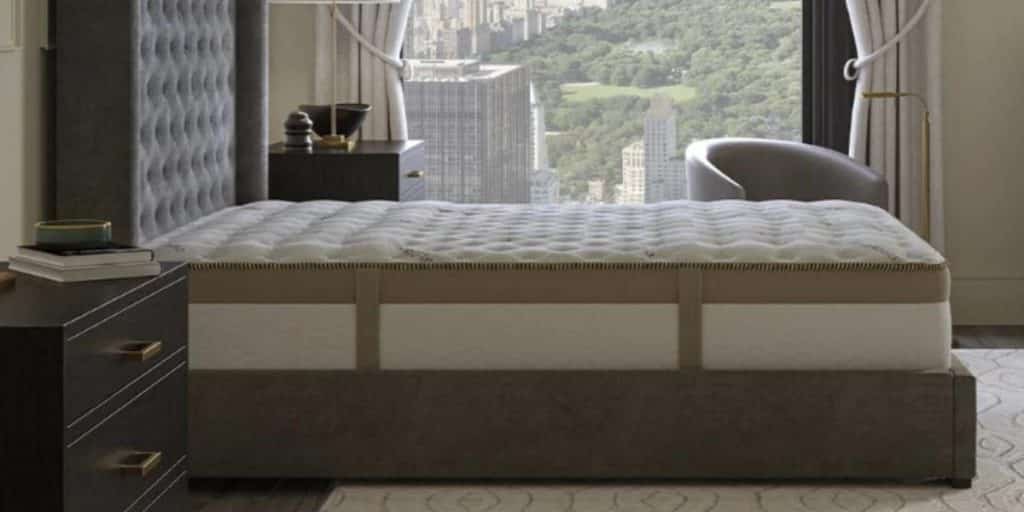
Average lifespan: 5-8 years
Gel-infused mattresses were introduced in 2006, though they were not well known until 2011. Gel mattresses are most often made as a hybrid between gel and memory foam.
It is widely known and preferred over stand alone memory foam mattresses because the gel helps eliminate the complaint that everyone has about memory foam mattresses, which is heat retention.
According to Sleep.org, memory foam mattresses trap heat due to their dense nature, blocking airflow. But, the gel prevents the mattress from absorbing heat, allowing it to stay cool.
This type of mattress is an excellent choice if you want to stay cool throughout the night, have a mattress that conforms perfectly to your body, and that allow you to enjoy adequate support as you sleep.
Gel mattresses can last between 5-8 years on average. Even though the memory foam itself will last much longer (more about this later) it’s the gel that wears out sooner, making the mattress feel a lot stiffer and not as malleable as it did before.
Related reading:
If you’re interested in gel mattresses, the absolute best one in my, as well as many others opinion is the Saatva Loom & Leaf Mattress.
Innerspring Mattresses
Average lifespan: 7-10 years
Innerspring mattresses have been around since the early 1900s and are one of the most popular mattresses. Steel coils used in this mattress collapse when weight is applied. These steel coils ensure the mattress has enough interior support. Therefore, more coils mean a better support system.
There are two methods to assemble these coils: individual and connected. If you share a bed with someone, go for the individual spring choice. If you acquire the connected spring one, you’ll risk waking up every time your bed partner move.
Another disadvantage is the squeaking noises that the springs produce over time. Innerspring mattresses can last between 7 to 10 years before asking for a replacement. Often times they wear out because the metal springs themselves lose their “spring” so to say, and that they usually wear out the textile materials around them.
One of the best innerspring mattresses currently available is the Nolah Evolution 15, which you can read more about here.
Hybrid Mattresses
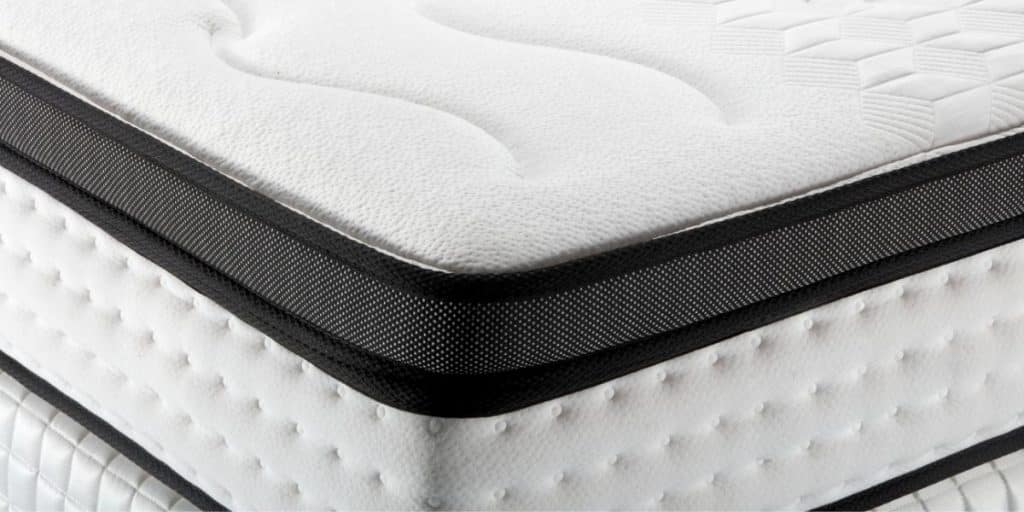
Average lifespan: 8-10 years
A hybrid mattress comes with an innerspring layer and memory foam or latex layer. This allows you to enjoy the advantages of both mattress types.
An innerspring mattress, for example, is not as durable as memory foam mattresses or latex; however, if combined with these other mattress types, you will get a more stable, long-lasting, and supportive bed.
Your hybrid mattress should last for at least ten years if properly maintaned.
If you’re interested in a hybrid mattress, one of the best out there is the Puffy Lux Mattress. You can learn more about it here.
Poly Foam Mattresses
Average lifespan: 8-10 years
Also known as Polyurethane foam, poly foam mattresses are the most affordable type of mattress available. Poly foam is made mostly from petrochemicals, and several spring mattress manufacturers are known to use it in the top layer. This is not because the material is high quality; instead, it is the most cost-effective option.
Because poly foam has little density, the mattress is easy to compress and ship. The main disadvantage is that this compression significantly affects the mattress’s lifespan. You can avoid this issue by choosing a high-density Poly foam.
However, you should note that even high-density poly foam degrades more quickly compared to other foam types such as memory foam and latex.
Though it has significant disadvantages, Poly foam mattresses have enhanced posture and spinal alignment. Its inorganic nature makes it one of the most hypoallergenic alternatives available. It also has the added advantage of being incredibly cost-effective.
This type of mattress can last up to a maximum of 10 years with good maintenance.
One of the best Poly foam mattress on the market that you can go for is the Casper Original Mattress.
Memory Foam Mattresses
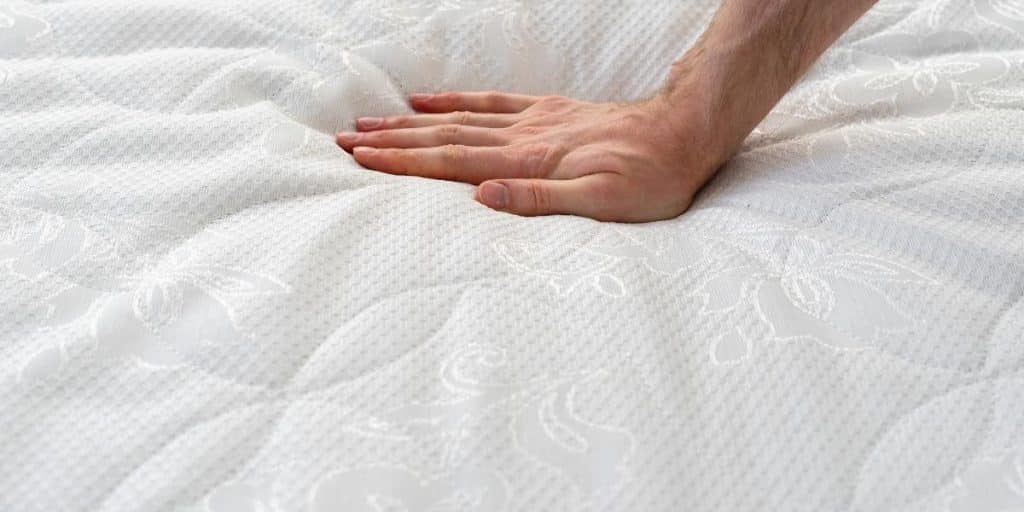
Average lifespan: 10-15 years
Memory foam mattresses are relatively new in comparison to other mattress types, but they have been in the market for a long time by now, as most of us know.
It was introduced in the 1960s by a NASA research center to enhance aircraft cushion safety. It’s also referred to as viscoelastic polyurethane foam.
Memory foam mattresses can last between 10 to 15 years.
One of the best and most affordable memory foam mattresses is the Nectar Memory Foam mattress. If you’re interested in learning more about it, you can do so here.
Latex Mattresses
Average lifespan: 15-18 years
Latex mattresses comes in three types; natural latex, synthetic latex, and blended latex.
Synthetic latex, such as Avena foam, are made to feel like latex but do not contain any actual latex. Natural latex are considered to be among the most long-lasting types of bedding materials available, as well as being healthy and safe.
Latex mattresses are among the most expensive mattress types, though they are expected to be extremely long-lasting and last for over 15 years.
The highest rated latex mattress currently available is the Saatva Latex Hybrid. You can read more about the mattress here if you’re interested.
Water Beds
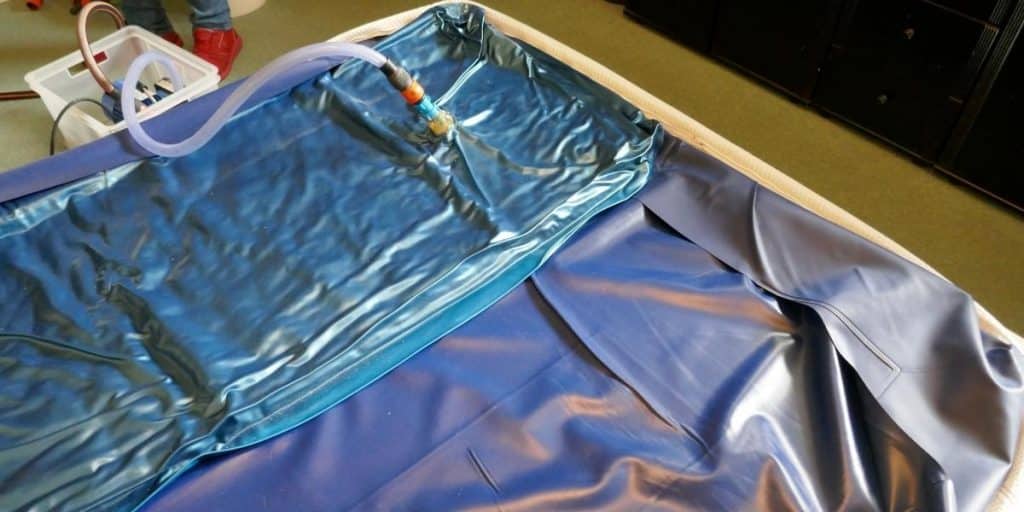
Average lifespan: 17-20 years
Waterbeds are one of the oldest mattresses on the market. They were manufactured in the early 1800s to help people suffering from bedsores. These beds mold themselves to your body and relieve all pressure points. It gives the impression of floating on waves, which is quite calming.
Water beds such as the Boyd California King also offer the extra benefit of providing you with the luxury of a heated bed and are hypoallergenic.
Some water bed mattresses can last up to 20 years, which is a very long time for any mattress. The Boyd brand even offers a 17-year long warranty on their waterbeds, making it clear to consumers that the mattress will last for a long time.
If you’re interested in learning more about the Boyd California King mattress, you can do so here.
Which Type of Mattress is Most And Least Likely to Sag?
From the mattresses mentioned in the list above, pillow top mattresses are most likely to sag because they have the shortest lifespan, while memory foam, latex and water mattresses are least likely to sag. The durability of the mattresses is one of the most telling signs for how early they are expected to sag.
With that said though, sagging is not the only durability issue. Some mattresses have shorter lifespans because innersprings and other parts may tear the textile around the mattress, making it wear out in that way.
Related reading:
How to Know When It’s Time to Replace Your Mattress
Are you feeling rested and relaxed from an excellent night’s sleep? If you’re like most people, the answer is undoubtedly “no.”
This is because between 50 and 70 million Americans suffer from sleep issues. That’s a significant number. Now, the mattress someone sleep on will likely stand for a smaller percentage of these numbers. But even so, having a fully functional mattress is very important for optimal sleep.
Therefore, let’s look at a few signs that’ll tell your mattress may need to be replaced.
Sign 1: You Wake Up Feeling Sore
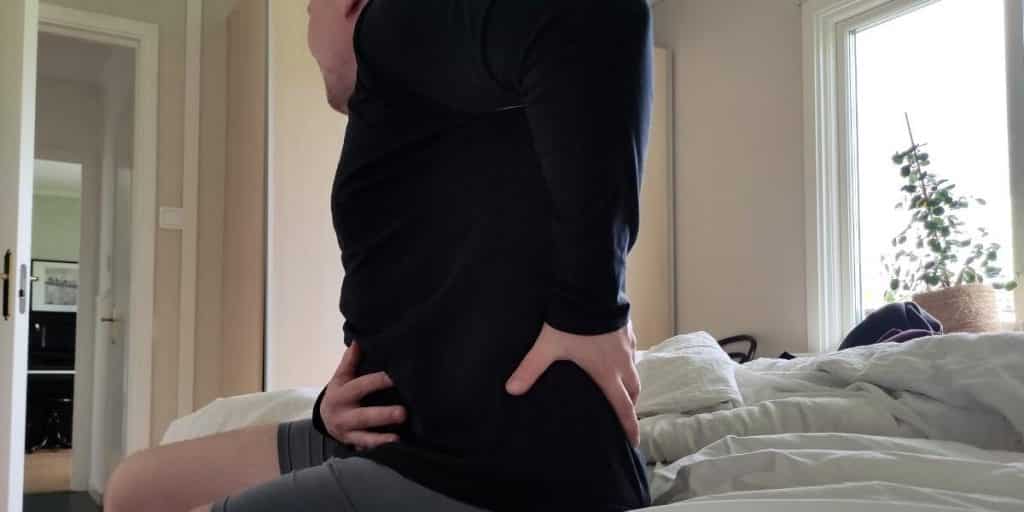
If you wake up with a sore back, neck, hips, or all of these, it’s likely that your mattress isn’t providing you with the support you require.
It does not only make for a long and unpleasant day, but it’s also likely that you’re not getting decent, restful sleep all night.
A previous injury, degenerative diseases, and sleeping on a mattress past its prime can all contribute to aches and pains.
Sign 2: Age of Your Current Mattress
Most mattresses have a seven-to-ten-year lifespan, according to the National Sleep Foundation. However, most people do not purchase a new mattress regularly.
Consider this: how many times have you bought a new mattress? And, how long ago did you buy the one you’re currently sleeping on? If you can’t recall the last time, you purchased a mattress, it’s probably time to consider doing so, at least if you notice any other of the signs noticed in this post.
Although a seven-to-ten-year old mattress is a good age at to consider changing it, it’s important to remember that this isn’t a hard and fast rule. If you bought a low-quality mattress, it may not last even close to that, while if you bought a high-quality mattress from a reputable company it may lasy years past that.
Your sleeping requirements also determine the length of time you keep your mattress. Do you need a lot of support or additional support in specific areas? If this is the case, you may need to replace your mattress more often.
Sign 3: Your Mattress is Noticeably Saggy
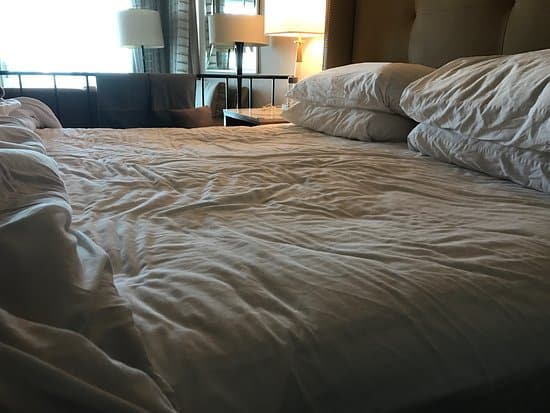
Maybe you realized that your mattress sags at the center the last time you changed your bedsheets. Since that area supports over 50% of your body weight, it may appear normal. But, sagging should not occur if you have a good mattress that is still within its expected lifespan.
When you sleep on a sinking bed, you will not get the support you need right where you need it. When you lie down on your mattress, your neck and spine are most likely out of alignment, resulting in a swollen neck, painful back, and headaches.
Many people are unaware they are sleeping on a mattress that has lost its support until they lie on a new one and notice the difference.
Sign 4: You Never Feel Rested
If you’re having trouble sleeping, there could be a problem with your mattress. If you sleep on a mattress that doesn’t meet your sleeping style or support needs, you’re likely to wake up with a headache or a hurting back.
Sign 5: You Wake up Frequently During the Night
There are various reasons why you may wake up frequently during the night, and one of them could be your mattress.
An unsupportive or uncomfortable mattress can hinder you from truly relaxing and entering that deep restorative sleep stage.
Perhaps your mattress is too hard, too heated, or not designed for your sleeping habits. In any case, a mattress that is too old or too little for you might make your life difficult.
Similarly, the appropriate mattress can boost your health and well-being by making you feel more relaxed.
Sign 6: You Sleep Better on the Couch or in a Recliner
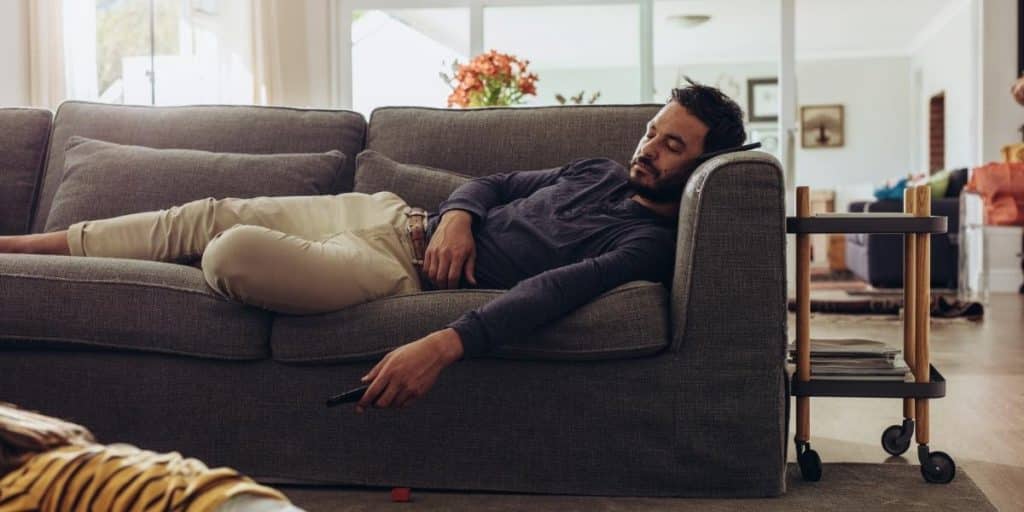
Do you frequently find yourself sleeping only in a recliner or on the couch? If you can’t recall the last time you watched a whole movie series, you may be fatigued from a lack of sufficient sleep.
It’s also possible that your beloved sofa or chair provides all of the necessary support and cushioning — something you should get from your mattress but aren’t if you decide to sleep elsewhere.
Not only is falling asleep in places other than your bed outside of your typical sleeping hours a poor habit to develop, it also disturbs your sleep cycle, making it more difficult to get a whole night’s sleep.
Consider purchasing a new mattress explicitly customized for you and your sleeping habits if you want to feel better and enjoy better sleep all night. You may discover that you look forward to going to bed each night, making it simpler to break your evening routine of falling asleep on the couch after supper.
How to Make Your Mattress Last Longer
We’ve compiled a list of eight of the most significant ways to protect your mattress investment by caring for it and avoiding disasters before they happen.
1. Make sure your mattress is adequately supported
Though you may not have to purchase a matching box spring or foundation when buying a new mattress, it is wise to have enough support for your mattress. This ensures the integrity of the materials is not compromised and prevents premature wear.
Contact the manufacturer for advice or see the warranty policy. Although box springs are often used with spring mattresses, memory foam and other specialty mattresses require firm, sturdy support.
The frame should sustain the weight of the sleepers and the mattress, and queen and king beds should be designed with center support bars. Platform beds with wide slats may ask for extra support depending on the mattress type and weight.
2. Use a mattress protector from the beginning
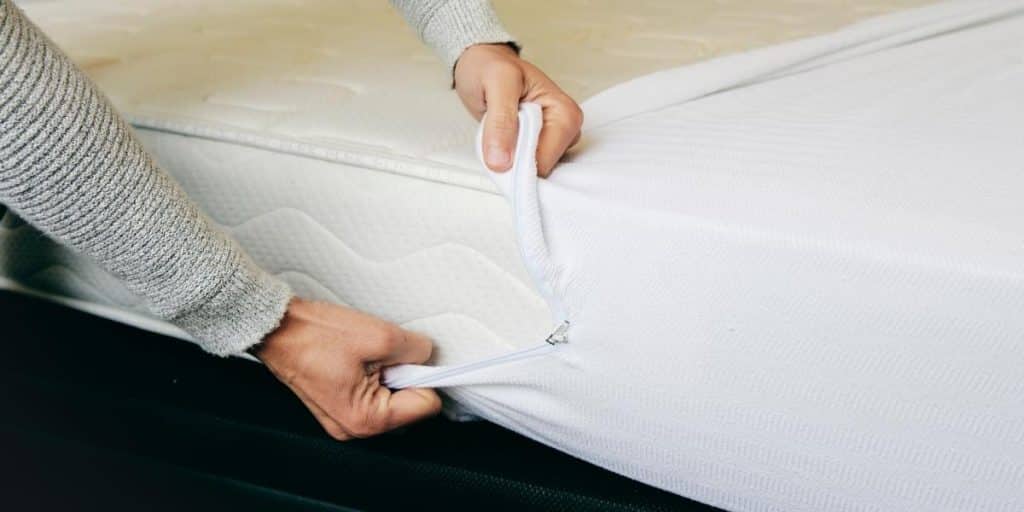
Mattress protectors are one of the greatest and simplest ways to maintain your bed’s longevity, as we’ve previously discussed.
A good, high-quality mattress protector protects your mattress from spills and mishaps and reduces the amount of dust, debris, and filth that gets into your bed.
This helps protect the materials in your bed from harm, gets rid of skin oils and sweat off the bed, and inhibits allergens like mildew and dust mites from buildup. When mishaps happen, a protector makes cleanup a breeze and many newer types are just as comfortable as a fitted sheet.
3. Wash bed linens regularly
Sweat, oils, hair, and skin cells are shed while sleeping. Crumbs are left behind by eating in bed, and pets can track things. All of this can infiltrate into mattress layers, develop bacteria, foster dust mites, and be unpleasant.
Most housekeeping experts say bed sheets and blankets should be cleaned after a week or two. Even if you use a mattress protector, you should keep your bedding clean. You should clean your mattress protector regularly, as directed by the manufacturer.
4. Get pets separate beds to snuggle in
When it comes to items in your sheets, it’s better to provide dogs with their beds rather than allowing them to sleep on your mattress.
Even the best-behaved pets go out, drool, and shed hair and cells like humans. All these ends up on your bed. Pets can often have accidents, ultimately damaging an otherwise fine mattress.
5. Rotate the mattress regularly
Regardless of material or size, every type of mattress benefits from regular rotation. Although some manufacturers claim it isn’t necessary, rotating helps enhance more even wear, but not rotating increases the chances of depression and softness of the mattress.
Rotate your mattress 180 degrees from head to foot after two to six months. This is crucial over the first several years while you break in your mattress.
6. No jumping on the bed!
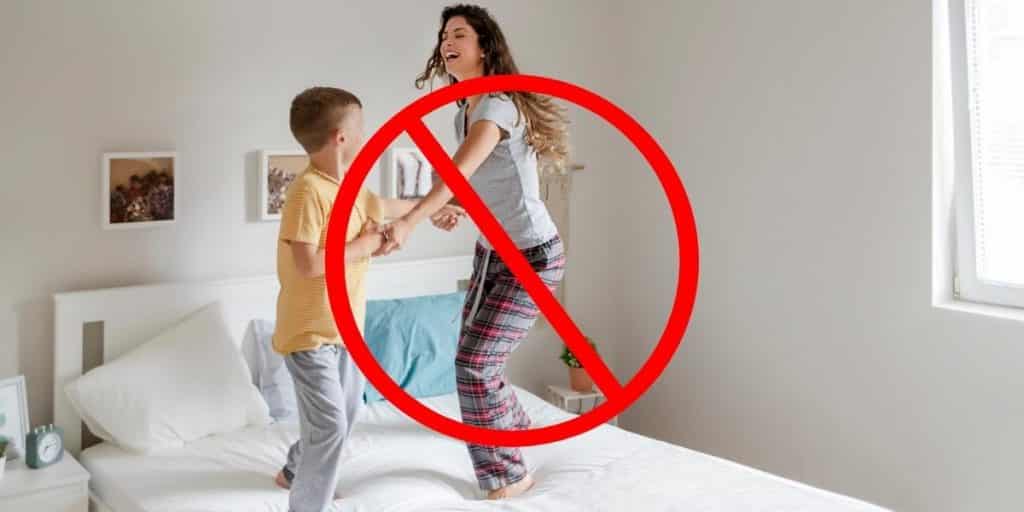
Your mother was right when she cautioned you not to jump on the bed. Spring, water, and air beds are the most vulnerable to harm from rough use, but foundations, frames, and foams can all wear out faster if you are hard on your mattress.
7. Take care when moving your mattress
Protect your mattress by covering it in plastic and avoiding bending or folding it when you move. Heavy-duty mattress bags, which may be attached with tape to keep dirt and wet off the bed and prevent scuffs and scratches, are commonly available at moving and box stores.
When transferring a mattress, it’s ideal to keep it upright on its sides to avoid creases or sagging as you move. Manufacturers often advise against using grips on covers to carry or drag the mattress.
Related reading:
8. Avoid Eating in Bed
A simple snack before bed may appear harmless, but overlooked crumbs might attract bugs and other small animals.
According to Paul Bello, an exterminator and proprietor of PJB Pest Management Consulting, told Huffpost that when crumbs are left around, bugs will come. Ants and cockroaches are the most common. “Those who are sloppy and don’t clean up after themselves are the ones who put themselves in danger,” Bello explains. “To survive, cockroaches just require a small amount of food.”
If you’re dining in bed no matter what, make sure your linens are changed frequently. According to Kadi Dulude, owner of renowned New York City cleaning firm Wizard Of Homes, changing linens every three days is excellent.
Can a Mattress Last 20 Years?
A mattress could last up to 20 years, although this is a rare case. The amount of wear and tear your mattress endures and the quality of its components determine how long it lasts.
Memory foam and latex mattresses, for example, can last up to 15 years or even slightly longer if well cared for, this is far longer than the normal innerspring mattress.
Lastly, as we have learned, the durability of your mattress is very much up to you and how you decide to use your mattress as well.
Related reading:
